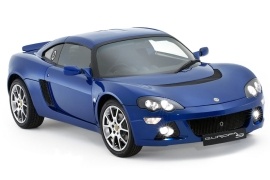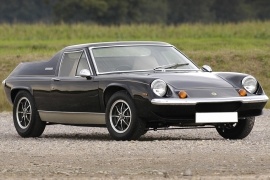LOTUS Europa Models/Series Timeline, Specifications & Photos
First production year: 1965
Engines: Gasoline
Body style: Coupé (two-door)
The 2006 Europa was the Lotus interpretation of a GT car. Unfortunately, its interpretation was not quite what a GT owner would expect from a long-journey vehicle.
Lotus Europa was a big name in the automotive industry. The first model was produced between 1966 and 1975. It was a nimble car with a small engine placed in the middle. In its top-spec model weighted just 710 kilos (1570 lbs). It was a true sports car and it was manufactured in 9230 units. But it wasn't a GT and it didn't have a sequel until 2006. The successor for the original Europa was the Esprit, which was closer to a GT vehicle.
The 2006 Europa was based on the light platform shared with the Elise. It was a closed coupe and it was claimed to be a GT. The car-maker stated that it lowered the side sills and installed a higher roof to allow better access inside the cabin. The unusual look of the headlights and the taillights were different than those on the Elise. The side air-intake for the engine compartment was similar to the one found on the Elise.
The interior was fitted with some sound-proofing materials, leather seats, and air-conditioning. That kind o amenities were not installed on the Elise, which was kept lighter. But still, the interior looked almost like a stripped-down premium-coupe. Unlike the Elise, it featured a bigger trunk, for long journeys.
The engine was a carry-over from Opel. It was a 2.0-liter turbocharged unit that produced 200 hp. It was mated to a standard 6-speed manual and there was no automatic gearbox on the options list.
It was a strange-looking coupe that really stood out from the crowd in its days, but not necessarily in a good way due to its weird-looking rear side.
The idea of mid-engined cars was not new, and it was already established as a successful combination in the motorsport arena, especially in the Formula 1 cars. Lotus noticed that and quickly adapted to introducing the Europa in 1965. In the following year, Lamborghini unveiled the Jalpa, which was also a mid-engine supercar.
The Europa featured a sharp front fascia with exposed, round headlights. Its very raked windshield was followed on the sides by fiber-glass panels that surrounded the engine compartment. From the back, it looked like a shooting brake with its engine cover flanked by taller side panels and a narrow rear windscreen placed behind the cockpit, in front of the engine bay. The Europa sported chromed metallic bumpers front and rear.
Inside, it was a no-nonsense sports car of the '60s, with bolstered seats and a tall center console. It was a very cramped cabin, with no room for six-footers (over 1.82 m heigh people). The instrument panel was extended over the center stack, with only the tachometer and speedometer placed in front of the driver.
Behind the cockpit, Lotus installed a Renault 16 engine with a 1.5-liter displacement. Later on, the British carmaker introduced the Renault 12 Gordini engine that developed 128 hp from a 1.6-liter unit and was paired to a five-speed manual. Earlier models featured only four-speed manuals.

